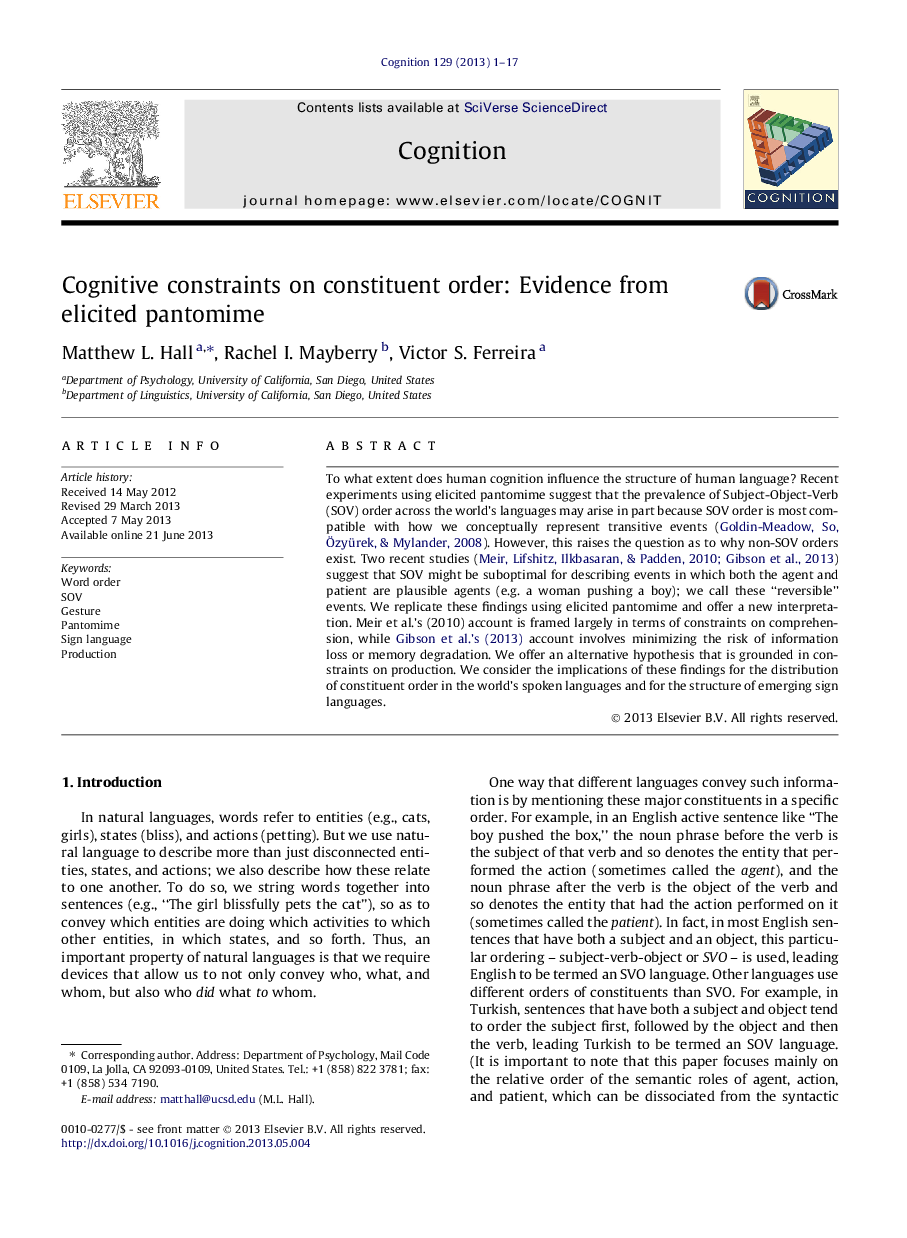| Article ID | Journal | Published Year | Pages | File Type |
|---|---|---|---|---|
| 10457686 | Cognition | 2013 | 17 Pages |
Abstract
To what extent does human cognition influence the structure of human language? Recent experiments using elicited pantomime suggest that the prevalence of Subject-Object-Verb (SOV) order across the world's languages may arise in part because SOV order is most compatible with how we conceptually represent transitive events (Goldin-Meadow, So, Ãzyürek, & Mylander, 2008). However, this raises the question as to why non-SOV orders exist. Two recent studies (Meir et al., 2010, Gibson et al., 2013) suggest that SOV might be suboptimal for describing events in which both the agent and patient are plausible agents (e.g. a woman pushing a boy); we call these “reversible” events. We replicate these findings using elicited pantomime and offer a new interpretation. Meir et al.'s (2010) account is framed largely in terms of constraints on comprehension, while Gibson et al.'s (2013) account involves minimizing the risk of information loss or memory degradation. We offer an alternative hypothesis that is grounded in constraints on production. We consider the implications of these findings for the distribution of constituent order in the world's spoken languages and for the structure of emerging sign languages.
Related Topics
Life Sciences
Neuroscience
Cognitive Neuroscience
Authors
Matthew L. Hall, Rachel I. Mayberry, Victor S. Ferreira,
